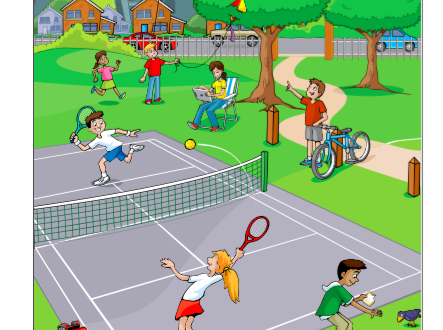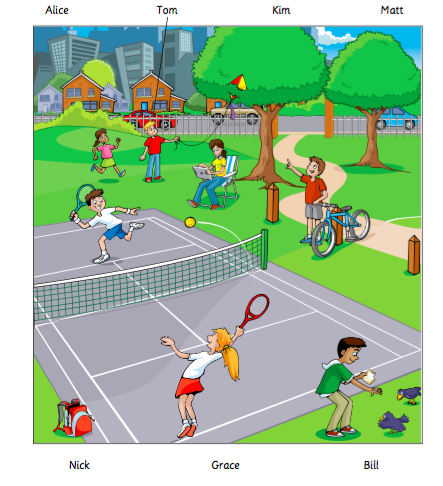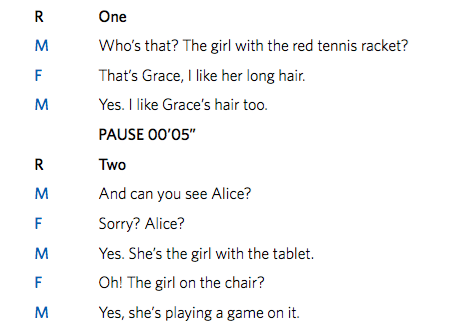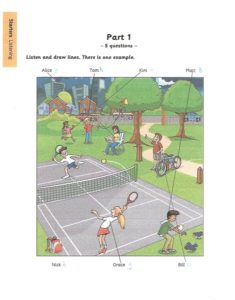How to do well in Pre-A1 Starters Listening Part 1
Here are some tips to help your students do Starters Listening Part 1 well.
Let’s take a look at the picture from Sample Papers 2:
Source: Sample Papers 2. Available here: http://www.cambridgeenglish.org/teaching-english/resources-for-teachers/
1. There are 7 names above and below the picture. Which are girls’ names, which are for boys and which can be used for both?
girls’ names: Alice, Grace
boys’ names: Tom, Matt, Nick, Bill
name for both boys and girls: Kim
Students could mark these names with g, b, =. (see below)
Starters names come from the wordlist. There are 21 names on this.
Alex, Kim, Pat and Sam could be used for either girls or boys. Make sure your students know this and which names are used for girls/boys.
Also, make sure your students are familiar with the pronunciation of the names. (And to help them with Starters Listening Part 2, the spelling too!)
Source: Young Learners Handbook. Available here: http://www.cambridgeenglish.org/teaching-english/resources-for-teachers/
2. Then, students should look at the seven people in the picture. They should look and check for:
How many girls are there? How many boys?
In the picture above, there are 3 girls and 4 boys.
Encourage them to look quickly at what the people are doing (playing tennis, flying a kite, pointing, running, sitting, holding a laptop, giving food to some birds). And think of words they might hear (tennis, kite, birds, laptop, bike…)
They probably won’t have too much time to do this (pauses are only 3 seconds in this part), but they can use the time when they’re listening to the example to do this.
3. Once the audio for the 5 questions starts, train students to put their finger or pencil on the name or the person.
Sometimes, they’ll hear the name first and sometimes, they’ll hear the description before the name. In my experience, some students understand all the information, but they forget the name that was being referred to!
We can see this below in the tapescript for questions 1 and 2.
In question 1, we identify which girl because of her tennis racket (the other person playing tennis is a boy). Then, we hear her name (twice at Starters) and we also get another piece of information about her. (her long hair) Students can put their finger or pencil on the girl, and then make the match.
In question 2, we first hear the name (twice), then we hear the two pieces of information. Students can put their finger or pencil on the name Alice above the picture, then make the match.
This will take the strain off their memory.
4. One name (and in Starters, one person) will not have a line. In this example, the name Nick is not used (or heard) and we don’t hear any information about the boy playing tennis.
It is really important that students know that this will be the case. Otherwise they can get anxious and think that they have missed some information.
5. Students should not worry about lines going through other people in the picture.
In the image below, you can see that the line from the name Bill to the boy passes through Matt’s face and hair. That’s not a problem at all – we can see clearly where the lines link the name to the person.
As an extension, you could ask students to say sentences which could describe the boy playing tennis. (e.g. He’s playing tennis. He’s got curly brown hair. He’ s wearing a white T-shirt and blue shorts. He’s holding a blue tennis racket.)
You could also get students to memorise who’s doing what, cover up the picture and ask questions:
What’s Matt holding? (bread) What’s he wearing? (a green and white T-shirt and brown trousers, brown and white shoes) What colour is his hair? (brown)
How many birds are there? (2) What colour are they? (purple/blue)
Loved sharing these tips with you. Hope they’re useful!





